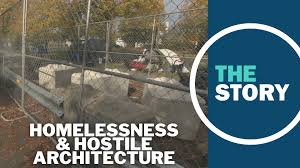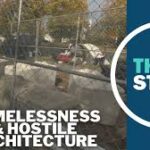Growing Frustration Over Unsuccessful Deterrents
PORTLAND, Ore. — Despite ongoing efforts to address homelessness, many residents in Southeast Portland are questioning the city’s latest approach: using fences, boulders, and concrete barriers to prevent encampments. Along parts of Powell Boulevard, these installations have become a familiar sight, but neighbors say they’ve done little to solve the problem.
Off Southeast 57th Avenue and Powell Boulevard, the city’s Public Environment Management Office has fenced off sections and added large blocks to discourage camping. Yet, residents say the measures have barely made a difference.
“I thought it was ridiculous,” said Lois Milare, a longtime neighbor. “Where the fencing is now used to be parking spaces. They just moved the camps around.”
Also Read
The city maintains the barriers are meant to “harden” areas and reduce illegal camping, but locals see the results as ineffective and costly.
High Costs, Low Results
This year alone, the city spent around $23,000 on deterrents like these. Still, tents have returned repeatedly. According to city records, cleanup crews have cleared this section of Powell Boulevard nine times in 2025 and conducted more than 70 site assessments since early 2024.
“They’ve done a lot of things — rocks, fences, blocks,” said Curt Howard, another resident. “Using tax dollars for methods that don’t actually solve a problem is pretty problematic.”
Formerly homeless individuals also question the city’s strategy. One man currently living in a tent near the new fences said he’s been displaced multiple times but has nowhere else to go because shelters won’t accept his dog.
“I think it’s a waste of time and money,” he said. “I’ve had to move a bunch of times already.”
Divided Neighborhood Perspectives
While some residents empathize with those living outdoors, others feel unsafe and frustrated. Robert, who once experienced homelessness himself, says it’s painful to watch people repeatedly displaced without being offered real alternatives.
“It’s hard to see a community moved every day,” he said. “What we need to do is find a place to put these people that are in tents. It’s disheartening — it’s a nightmare.”
However, further east along Powell Boulevard, frustration runs deeper. A woman living near Southeast 80th and Rhine Street said she’s planning to move out of Portland entirely because of the encampments.
“It’s affected my life so bad,” she said. “My kids can’t go outside because there are needles and foil everywhere. They’re scared. I can’t wait for my family to live somewhere they can play and thrive.”
Ongoing City Efforts to Expand Shelter Capacity
Mayor Keith Wilson has pledged to create 1,500 overnight shelter beds and several day centers by December 1, 2025, as part of Portland’s larger strategy to reduce unsheltered homelessness. As of this week, the city has more than 800 available beds, with nearly 300 more opening next month for individuals in recovery programs — bringing the total to just under 1,100.
Even so, residents and advocates agree that simply installing barriers or clearing camps isn’t a lasting solution. The cycle of displacement continues, with many unhoused people struggling to access shelters due to restrictions, lack of space, or personal challenges such as pets, health, and safety concerns.
Searching for Real Solutions
As Portland works to expand shelter options and supportive housing, the question remains whether physical deterrents like fences and boulders truly help. For now, many Southeast Portland residents — both housed and unhoused — feel trapped in a system that offers few real answers.
“It’s not good for anybody,” Milare said. “We need something that helps people move forward, not just pushes them somewhere else.”












